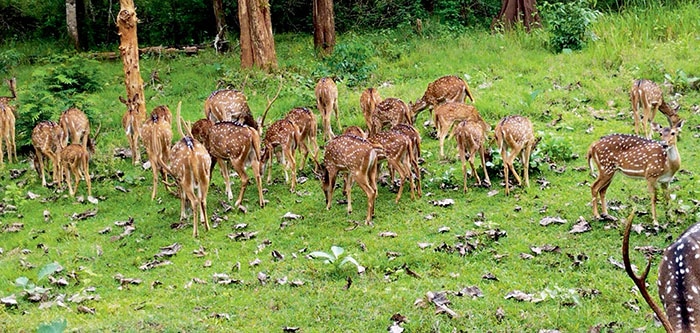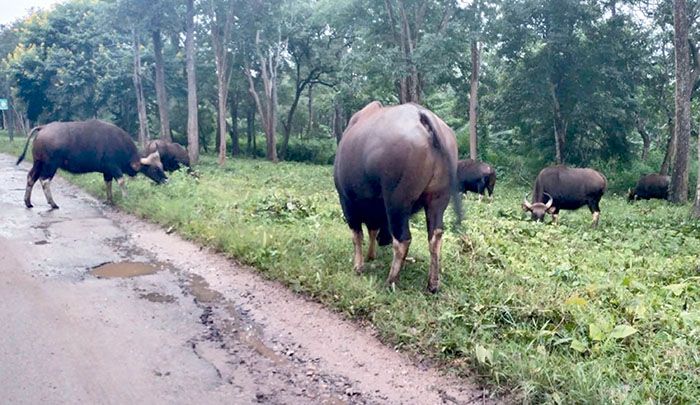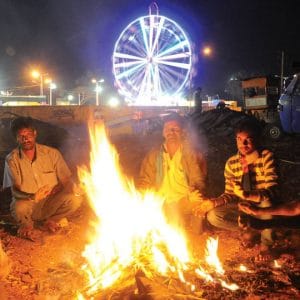Hunsur: Continuous rains has regenerated greenery in Nagarahole National Park and the forest is now filled with greenery with lakes and ponds in the reserve forest not drying up due to summer heat.
The Forest is spread across 643 sq km and is divided into eight ranges — Nagarahole, Kallalli, Veeranahosahalli, Hunsur, Anechowkur, Antharasanthe, D.B. Kuppe and Metikuppe. Nagarahole is known for more than 250 varieties of birds and wild animals like deer, Asian elephants, wild boars, leopards, tigers, langurs, gaurs etc., which are now moving around the forest freely. If one visits the forest, they can see most of the lakes and ponds with water and wild animals quenching their thirst.
The cool climate had brought the wild animals out and sighting wild animals in herds and groups is a visual treat to safari goers who are now spotting tigers and leopards at water holes. The pleasant sounds made by birds, the friendly fights of elephants, jumping deers and elephant herds playing in water is a sight to behold.

If lucky, one can witness the majestic walk of tigers and elephants close to the roads inside the forest and also, the rains have minimised the forest fire incidents as the trees and plants, which get dried up during summer, have sprung back and greenery is all around. The continuous rains are also filling up lakes, ponds and other waterholes inside the core forest area.
The water level of Lakshmanatheertha River, the lifeline of the forest has also increased and there is no scarcity of water to the wildlife as of now.
The rains have not only filled ponds and lakes but have also created small streams which pass inside the forest providing water to wild animals in the core area.

With the forest turning green and water getting filled in lakes and ponds such as Channammanakatte, Yerekatte, Mantallikere, Madallikere, Mudaganurkere, Billenahosahallikere, Bheemanakatte etc., there are chances of wild animals not venturing out of the forest in search of food and water.








Recent Comments